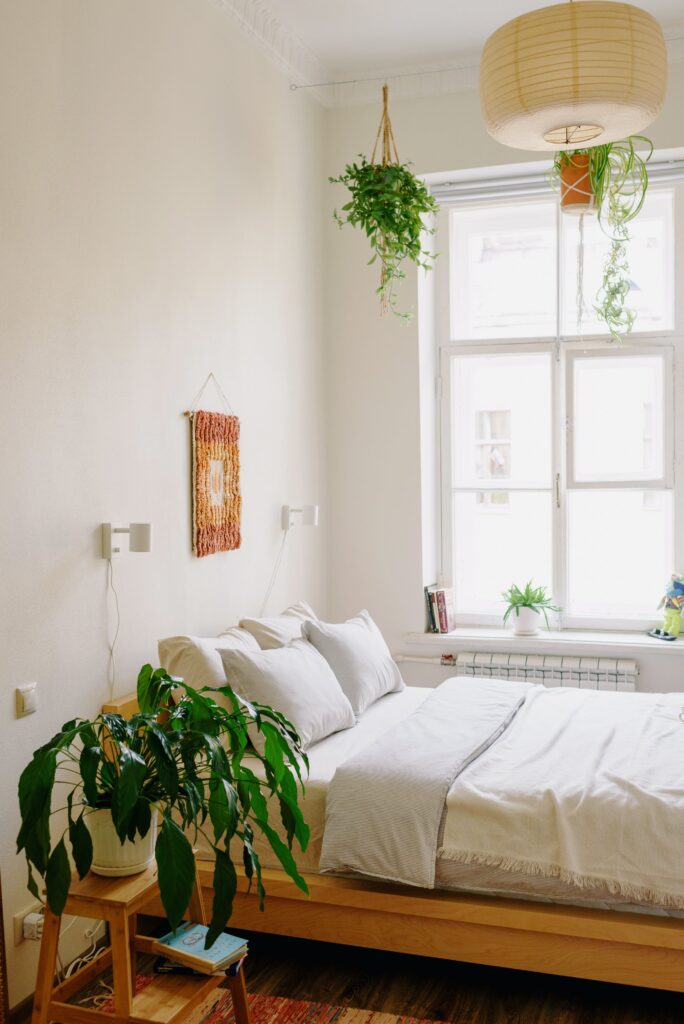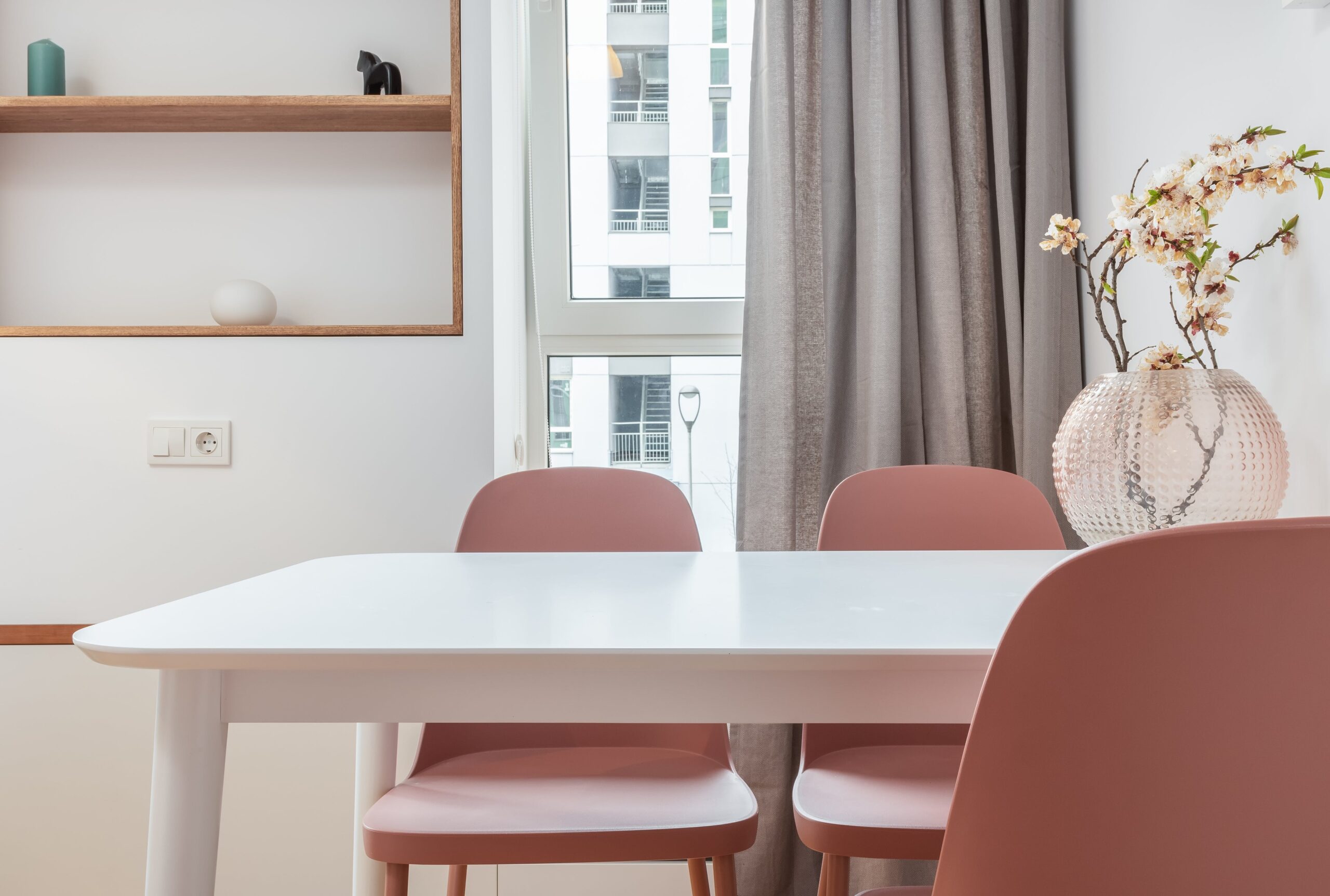Naturally, those little paint swatches can be deceiving. Struggling to make a tiny rug fit in a massive living room? Nope, not gonna work. And decorating around a piece of furniture you hate is surefire way to end up regretting it. Have faith in your instincts!
When I think back to my sloppy attempts to decorate our home, I am reminded of all the naive decorating blunders I made. A part of me wishes for the advice that could have saved me from these disasters! Nevertheless, it seems that sometimes you have to pick up knowledge the hard way.
1. Declutter Before You Decorate
Before diving into the intricate world of decorating, consider taking a step back and initiating a complete purge—yes, everything. This process of decluttering is more than just a chore; it’s a transformative journey. Sort through your possessions, donate items that no longer serve a purpose, and establish an effective organization system for what remains.
Once the clutter is tamed and your living space feels rejuvenated, you’ll find yourself standing before a clearer canvas, ready to add those finishing touches of beautiful decor. Think of it as a reset button for your home, allowing you to create a space that is not only aesthetically pleasing but also functional and reflective of your personality.
For those seeking a structured approach to decluttering, I’ve put together a comprehensive decluttering guide to help you through the process. Embrace the liberating power of decluttering, and watch as your home transforms into a haven of clarity and style.
2. Trying Paint Colors Before Committing
Choose your top paint colors using paper swatches You can get ideas from Pinterest or Instagram. Purchase sample sizes of these colors and use them on a white foam board. Put them on your walls with tape, and then give them a day or two to see how these colors look in different lighting conditions, such as lamp and natural light. This mindful method guarantees that, before committing to a complete paint job, you make an informed choice.
You’ll be happy you invested the time to go through the sample process in order to select the ideal paint color. I promise you that making thoughtful decisions early on will pay off in the long run.
If you’re looking for some guidance, here are a few of my favorite go-to paint colors to help you get started.
3. Not Using Too Many Small Decorations
When I first started decorating, I loved to fill dressers, end tables, and shelves with a number of little, individually charming pieces.
I thought to myself, “Well, it’s all nice on its own, so together it will be perfect.” But the reality was a disorganized and disorderly mess.
Less is more when it comes to decorating flat areas like tabletops, dressers, and end tables. Choose thoughtfully selected accent pieces for your decor that come in a range of sizes and heights. To avoid visual clutter and achieve the perfect balance, consider these styling tips for coffee tables, end tables, buffets, nightstands, and entry tables.
4. Using The Power of Plants
I used to get this feeling when I would look around a room that something was missing, like there was some elusive space I couldn’t quite place my finger on. Then I realized it was life, or more accurately, living things.
Whether you’re a master gardener or prefer to stick with artificial vegetation, adding plants to a space changes it and can make any room feel vibrant and full of life.

5. Streamlining Tabletop Displays
“Decorating tips” that say don’t hang family photos make me laugh because I always figure, “Real people live here, not robots.” But then reality set in when I realized that filling entire console tables with frames of family photos was just as overwhelming as the knickknack issue I mentioned earlier.
The answer? Choose to display family photos on a gallery wall or keep the number of tabletop frames to a minimum. If you’re looking for something sleek, basic, and contemporary, think about putting plain black and white prints in black frames. It’s an easy way to achieve minimalist design that is timeless and sentimental. Or you can go the opposite way and find a variety of ornate-looking frames of different sizes for an eclectic feel.
6. Tackling Exposed Cables and Cords
Living with the cable mess for a while left us feeling uncertain about how to address the situation. However, we discovered a straightforward solution that turned the chaos into a seamless and aesthetically pleasing element of our space.
The game-changer? Cord covers. Investing in these simple yet effective accessories allowed us to neatly wrap our cables, affix them to the wall, and paint them in the same color as the wall. The result was remarkable—our cords seamlessly integrated into the environment, offering not just a functional fix but also a visually delicate touch that significantly enhanced the overall appeal of the room. It’s proof that sometimes, the simplest solutions can yield the most profound results.
7. Don’t Tolerate Something You Hate
My experience with decorating my home was characterized by multiple unproductive attempts to manage the unrealistic undertaking of enhancing a space around a furniture piece that I hated. I was caught up in the challenge of working around a design element that I resented rather than taking the chance to break away from it and invest in something that truly spoke to my taste.
The harsh reality set in: trying to decorate around something you hate is almost guaranteed to cast a shadow over the entire space, reducing its functionality and appeal.
Fortunately, a tight budget shouldn’t prevent you from completely transforming your space. Craigslist, Facebook buy/sell/trade groups, yard sales, thrift stores, and consignment shops are all gold mines full of possible replacements just waiting to give your home a makeover. It serves as a reminder that no matter how tight your budget is, there are countless opportunities to create a space you genuinely love.
8. Finding Balance with Furniture
It’s time to reconsider your furniture placement when walking around a room feels like navigating an obstacle course. Evaluate thoroughly and think about keeping only the most important pieces. If needed, replace oversized furniture with pieces that are more appropriately sized.
Not only do packed rooms feel claustrophobic, but they are also less functional. Decide which items you use the most and think about eliminating the others. A well-proportioned and roomy arrangement enhances the comfort and functionality of a living space.
9. Avoiding the Pitfalls of Too Small Rugs
Selecting the right rug size can be a game-changer for the overall feel of your room. If your current rug is creating a visual clutter, consider these sizing tips to transform your space into a more balanced and harmonious environment.
Using a rug selection guide is like having a blueprint for achieving the perfect fit. An 8 x 10 rug is a great option for living rooms and under beds (go for 9 x 12 for larger spaces). A 6 x 9 rug is a great choice for dining tables since it allows all four chair legs to rest comfortably on it and leaves a foot of space behind for easy chair movement.
Taking a moment to reconsider the size of your rug improves the visual appeal of your space and adds to its feeling of openness and practicality. It’s a minor change that can have a big impact on the comfort and overall style of your living area.
9. Finding Balance in Design
When it comes to fabric patterns, maintaining a harmonious look is key to a well-designed space. To strike the right balance, consider limiting yourself to approximately three fabric patterns at a time. This intentional curation helps avoid visual overload and ensures a cohesive and pleasing aesthetic.
For a foolproof formula, incorporate a vintage-style rug with a fluid print as your anchor. Pair it with a nature-inspired print, such as floral, for an organic touch. Introduce a geometric print like stripes or plaid to add structure and visual interest. Finally, anchor the ensemble with one or two solid fabrics boasting interesting textures. This strategic approach creates a well-rounded and visually appealing blend, adding depth and character to your space without overwhelming the senses. It’s a thoughtful way to infuse your personality into the décor while maintaining a sense of balance and style.
10. Hanging Picture Frames Eye-Level
When I first started decorating, I would always hang pictures at level with door frames. That is, until I started flipping through magazines and realized I had been doing it all wrong.
For an artful arrangement, adhere to the golden rule of hanging artwork and wall decor at eye level. Ideally, the center of the art should be positioned between 57 and 60 inches from the floor. And when we refer to eye-level, it’s the average person’s eye level, not Shaquille O’Neal’s. This simple yet effective adjustment ensures that your artwork is thoughtfully placed, contributing to a more visually pleasing and harmonious room. It’s a subtle tweak that can make a significant impact, transforming your space into a gallery-worthy showcase of your personal style.
11. Elevate with Color
Even though I still love neutrals—our living room is all white right now—I’ve learned that adding color with accents can have a transformational effect, especially on people who are afraid to make big, permanent decisions, or are renting.
My color picks for the color-averse are blues and greens. Naturally occurring in large quantities, these hues provide a calming and less striking alternative. Whether it’s a rich dark green, a cool light green, a deep, dark blue, or a soothing light blue, experimenting with these hues in accent pieces can give your room life and vitality.
12. Curtain Confidence: Mastering the Right Heights and Widths
Use the “high and wide” rule to create the illusion of larger rooms and transform your space. Installing the rod near the ceiling—ideally, right below the crown molding—and keeping it 3 to 4 inches from the ceiling will raise your curtains. This is especially important in rooms with lower ceilings. Use the same approach to create a unified and aesthetically beautiful appearance with arched windows.
Extend the curtain rod about 10″ outside of the window frame to accentuate the window’s presence and give your room a feeling of grandeur by making the window appear wider.
To achieve the ideal curtain length, make sure the panels touch the floor just barely. Your living areas become inviting havens of style and comfort thanks to this painstaking attention to detail, which also adds a sense of spaciousness and improves the aesthetics of your space.
13. Illuminate with Intention
Say goodbye to the reliance on overhead lighting and welcome the integration of layered lighting into your space. When possible, combine an overhead light with carefully placed table lamps. When it comes to task lighting, use wall sconces or desk lamps.
The end effect is a warm, distinctive room that is bathed in a harmonious illumination. Choose 3000K light bulbs for the perfect mix of a warm, not too blue, not too yellow atmosphere. This tasteful combination of lighting sources makes your place feel cozy and welcoming while also providing a functional and stylish haven.
The decorating process is, in fact, an ongoing evolution characterized by growth and discovery. Every error turns into a useful learning experience that helps you hone your aesthetic and create an environment that truly reflects you. What adds excitement and imagination to the adventure is accepting this learning process and letting your tastes change over time.
Your advice and insights are a goldmine for fellow enthusiasts starting out in decorating. Post your thoughts, advice, and insights in the comments section to start a lively conversation where we can all benefit from each other’s successes and maybe save someone from a decorating disaster.



